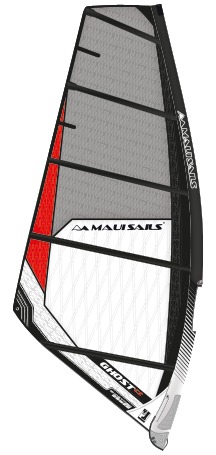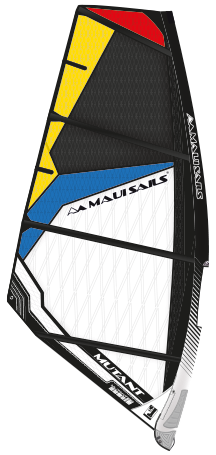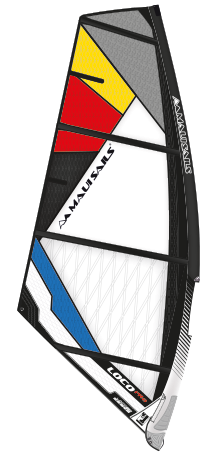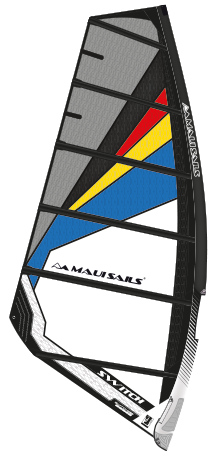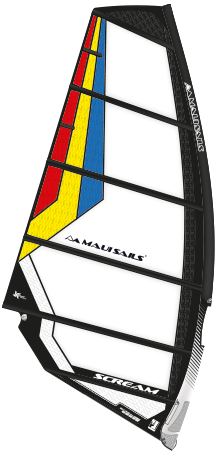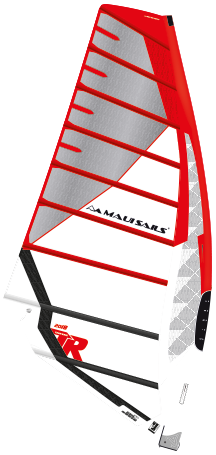2009 TR-5
Racing/Slalom


The TR-5 from MauiSails is far beyond an average race sail. Super tuned now after four seasons, the TR-5 is perfectly refined and balanced for easy top speed and the wide range necessary for top results in crowded racing.
We have been building on an evolving unusual shaping method, and refinement and performance consistency moving size to size has been the focus. Developing an even tension and smooth transition from fuller lower sections to flatter more twisted upper sections results in excellent low end power and amazing upwind speed. Slalom sizes benefit from similar adjustments and a general easing of tension to make a soft feel.
NEW Technical Features for the TR-5
- Reduced Luff Curve and progressive Dynamic Skin Tension for softer feel and twisted flying shape for higher top end with no loss to low end power.
- New Camber Inducers reduce weight and smooth rotation.
- Raised Boom Cut Out opening.
- Improved Chafe Resistance against the boom on the batten pocket.
- Integrated Reinforcement plys in high wear areas increase life.
- New Light Weight Tack Fairing with Impact Bumper.
- New Batten Tensioner smoothes trailing edge with cleaner load dispersion.
We have been building on evolving an unusual shaping method with refinement and performance consistency while moving size to size has been a strong focus. Making all the sails have a similar comfortable feel through a wide range of conditions is a benefit of developing even tension with smooth transition from fuller lower sections to flatter more twisted upper sections. This results in excellent low end power and amazing upwind speed.
By subtly shifting load in the batten tension attachments, we smoothed the trailing edge and guaranteed proper tension on the critical leech edge. New EVA tack fairing covers add nice finish and make the lower sleeve end smoothly.
Probably the most significant addition to the 2008/9 development cycle has been our Omega™ Load Cell device. Customized especially for use with windsurfing sails, this highly accurate electronic sensor helps us to see the actual rigging loads at work. Through using the OLC in daily rigging sessions, we can easily pinpoint an ideal tension range easily. Within a narrow band of adjustment ( about 1cm) there can be a wide band of tension measured. For example, a TR-5 7.6 tensioned at about 210 kg (which is about 40kg more than we find ideal), is only 1cm more than when the sail is tensioned at 125 kg, far too little. This is what prompted us to use a more refined description of the downhaul settings, now to be measured rather than assuming base dimensions are correct.
That the tension is changing so remarkably after relatively small changes in measured tuning has shown us that the adjustments a highly competitive sailor makes must take this into account. Accuracy and repeatability become very important for determining the ideal settings that work for your board, fin, and body type. Changes of only 3-5mm can result in differences in feel or performance attributes that would be unrecognizable in static, and only discovered in one-on-one tuning or race conditions. This is why it is so important to be extra careful with measuring and recording successful settings. This is why you will see top level competitors doing this and often keeping notes about observations.
This type of easily adjusted, lower tension sail shape has fine control that effects twist and leech tension more evenly and predictability. The adjustable outhaul serves to firm the leech smoothly and is gauged to progressively tighten the edge without making the lower sections go flat.
colours

Specification








